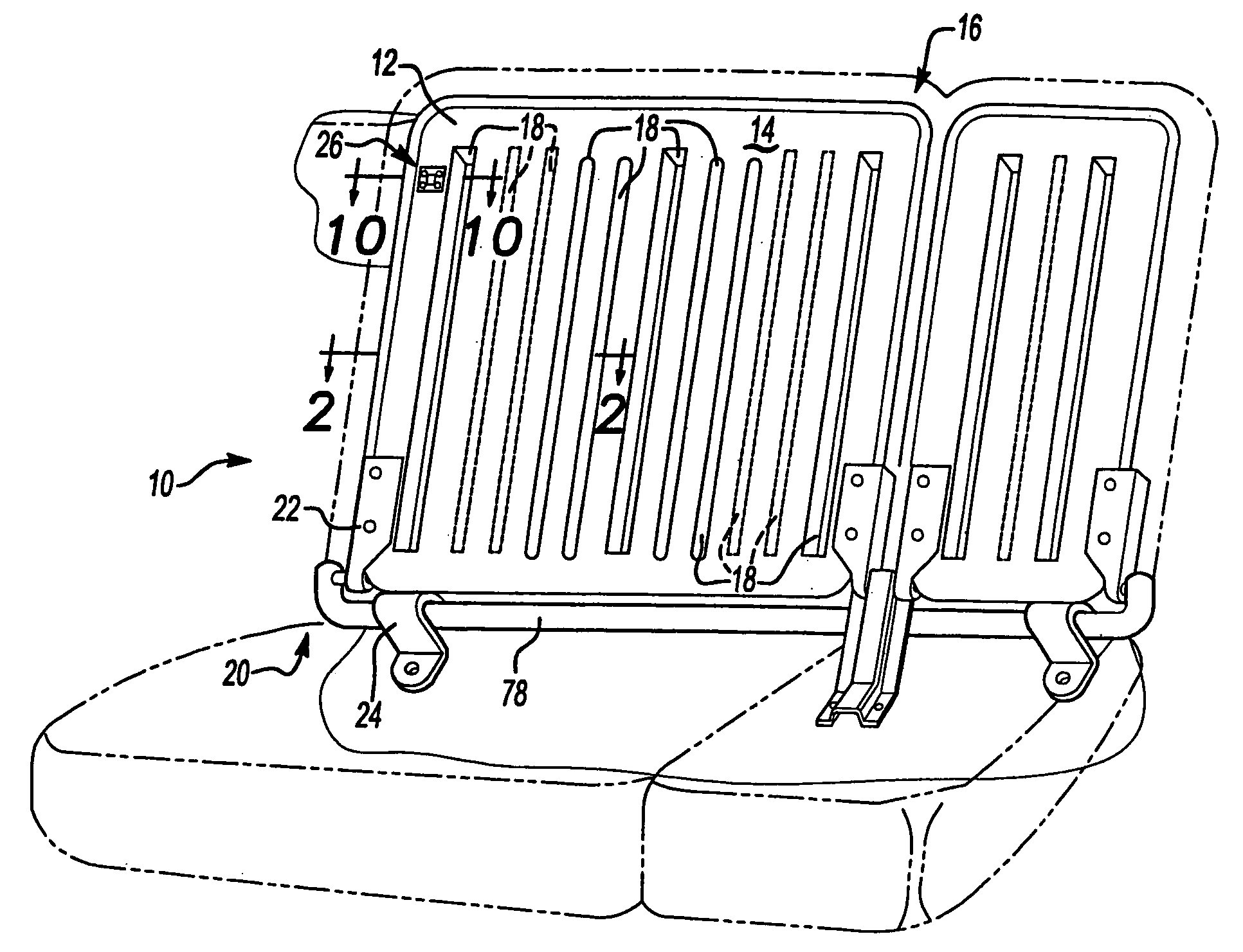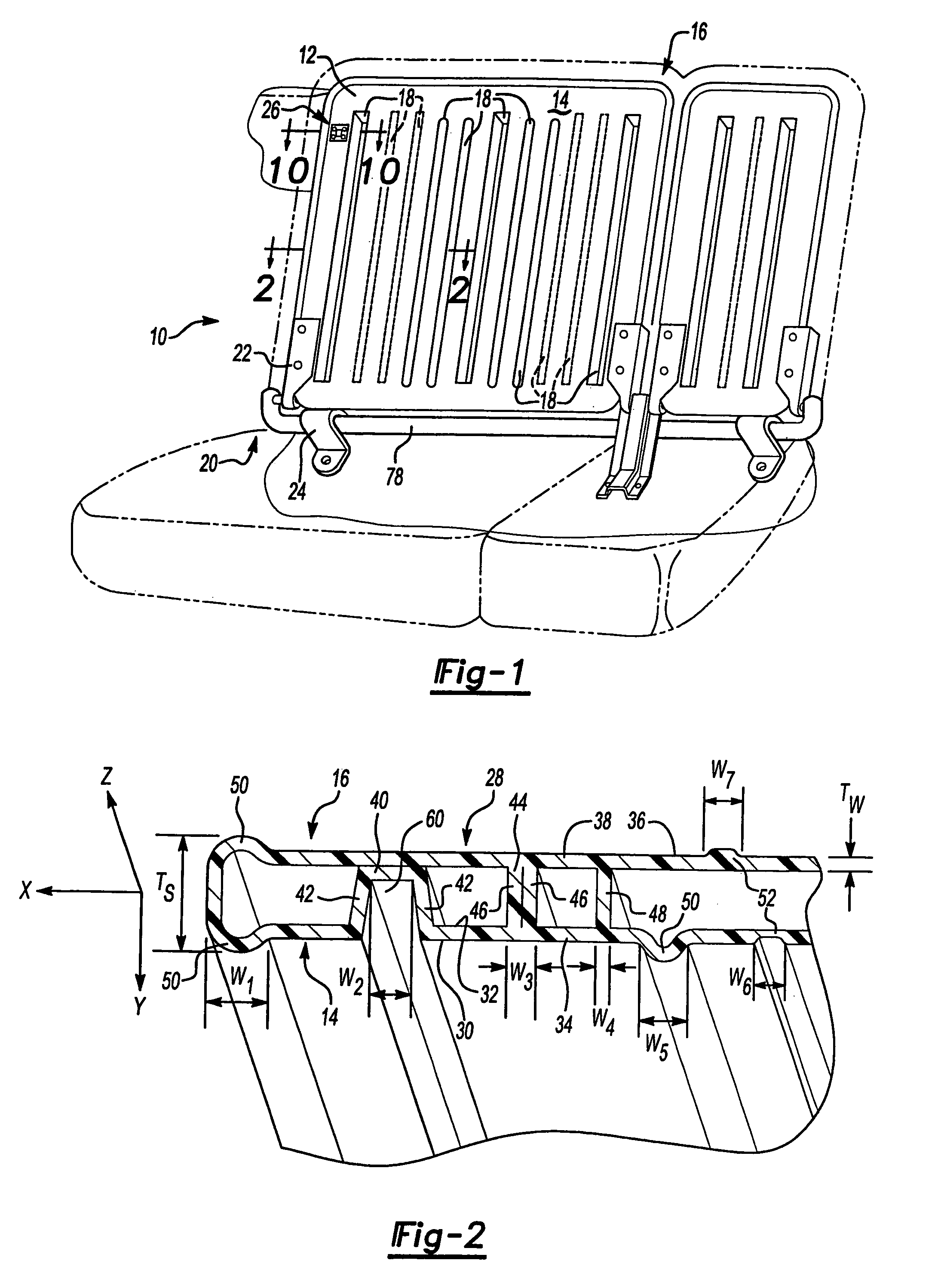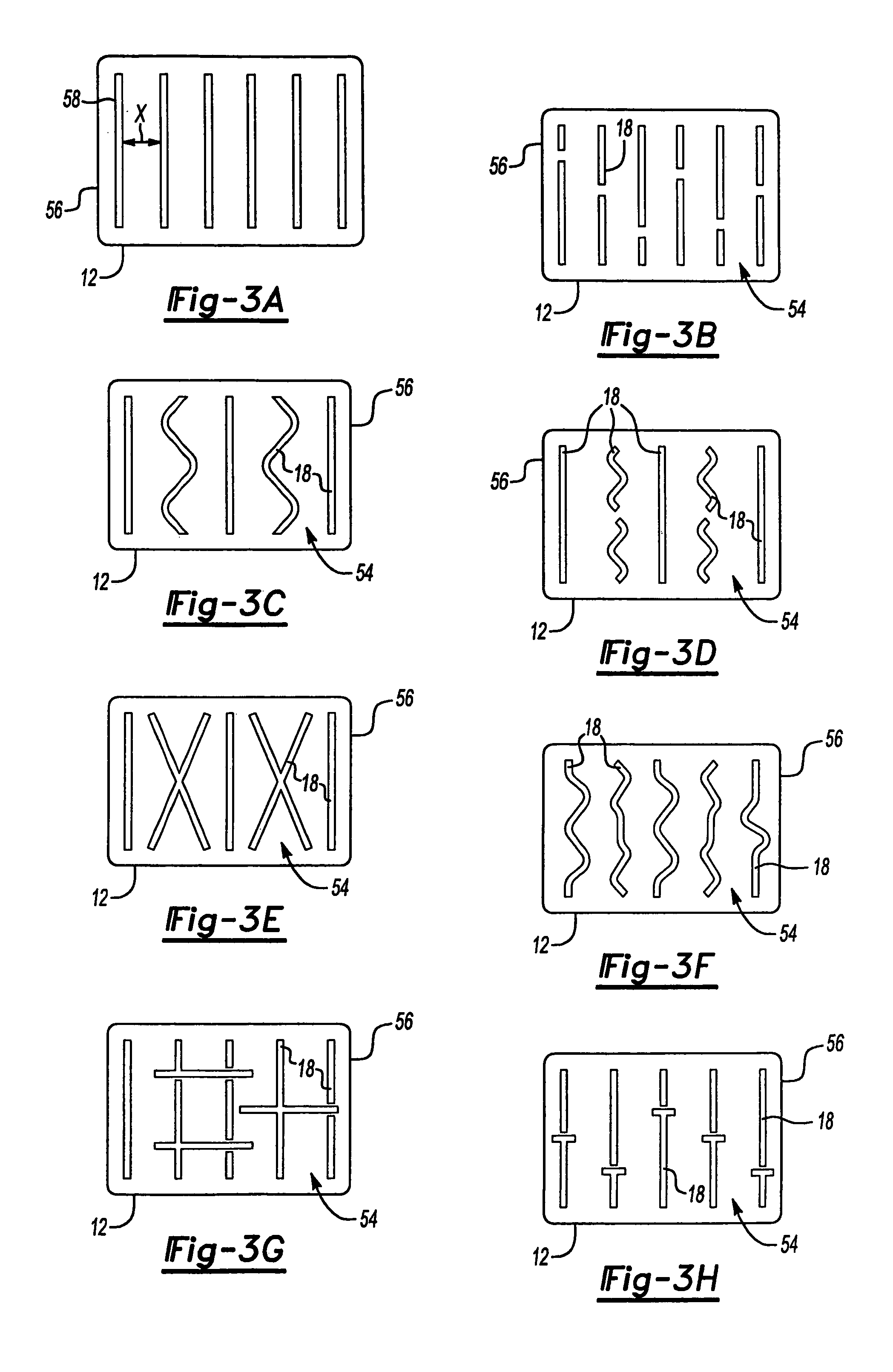Seating system and method for making same
a seating system and seating technology, applied in the direction of chairs, safety belts, pedestrian/occupant safety arrangements, etc., can solve the problems of substantial modification, unduly complicating manufacturing procedures, and requiring the development of expensive new processing techniques, so as to achieve easy manufacturing and add substantial weight to the vehicle
- Summary
- Abstract
- Description
- Claims
- Application Information
AI Technical Summary
Benefits of technology
Problems solved by technology
Method used
Image
Examples
example 1
[0086]Two seat back assemblies are fabricated for a sedan vehicle, such as the seat back assembly as shown generally in FIG. 15 having individual integrated reinforcement structures 18 defining an integrated reinforcement structure pattern 54 and an upper edge latch (not shown). One is fabricated using blow molded PULSE® 2200 BG resin (from The Dow Chemical Company). The other one is fabricated using blow molded MAGNUM® 1150 EM resin (from The Dow Chemical Company). A halo frame 82 carries the seat backs, which are hingedly connected along their bottom edge 130 and latched along the top edge 132. As with Examples 2–4, the seat back includes two child seat tether anchors 134, although other applications may include no anchor, a single anchor or more than one anchor, upper or lower. The final seat back has an average wall thickness in the seat back of about 3 mm, and an average section thickness of about 25 mm. Both assemblies pass United States and European government test standards ...
example 2
[0087]Two seat back assemblies are fabricated for a vehicle with a rear hatch, such as seat back assembly as shown generally in FIG. 1. One is fabricated using blow molded PULSE® 2200 BG resin (from The Dow Chemical Company). The other one is fabricated using blow molded MAGNUM® 1150 EM resin (from The Dow Chemical Company). The final assembly has an average wall thickness in the seat back of about 3 mm, and an average section thickness of about 30 mm. Both assemblies pass United States and European government test standards for motor vehicles as addressed in FMVSS 207 (49 CFR 571.207), FMVSS 225 (49 CFR 571.225) and ECE 17, as well as the requirements of automobile original equipment manufacturers and their suppliers.
example 3
[0088]Two seat back assemblies are fabricated for a vehicle to be a free-standing seat assembly, such as assembly as shown generally in FIG. 16 having individual integrated reinforcement structures 18 defining an integrated reinforcement structure pattern 54. The seat backs are secured to the vehicle body in white with a conventional lower lock / latch 136 connected to a bracket 138. One is fabricated using blow molded PULSE® 2200 BG resin (from The Dow Chemical Company). The other one is fabricated using blow molded MAGNUM® 1150 EM resin (from The Dow Chemical Company). The final assembly has an average wall thickness in the seat back of about 3 mm, and an average section thickness of about 30 mm. Both assemblies pass United States and European government test standards for motor vehicles as addressed in FMVSS 207 (49 CFR 571.207), FMVSS 225 (49 CFR 571.225) and ECE 17, as well as the requirements of automobile original equipment manufacturers and their suppliers.
PUM
| Property | Measurement | Unit |
|---|---|---|
| Force | aaaaa | aaaaa |
| Force | aaaaa | aaaaa |
| Mass | aaaaa | aaaaa |
Abstract
Description
Claims
Application Information
 Login to View More
Login to View More - R&D
- Intellectual Property
- Life Sciences
- Materials
- Tech Scout
- Unparalleled Data Quality
- Higher Quality Content
- 60% Fewer Hallucinations
Browse by: Latest US Patents, China's latest patents, Technical Efficacy Thesaurus, Application Domain, Technology Topic, Popular Technical Reports.
© 2025 PatSnap. All rights reserved.Legal|Privacy policy|Modern Slavery Act Transparency Statement|Sitemap|About US| Contact US: help@patsnap.com



